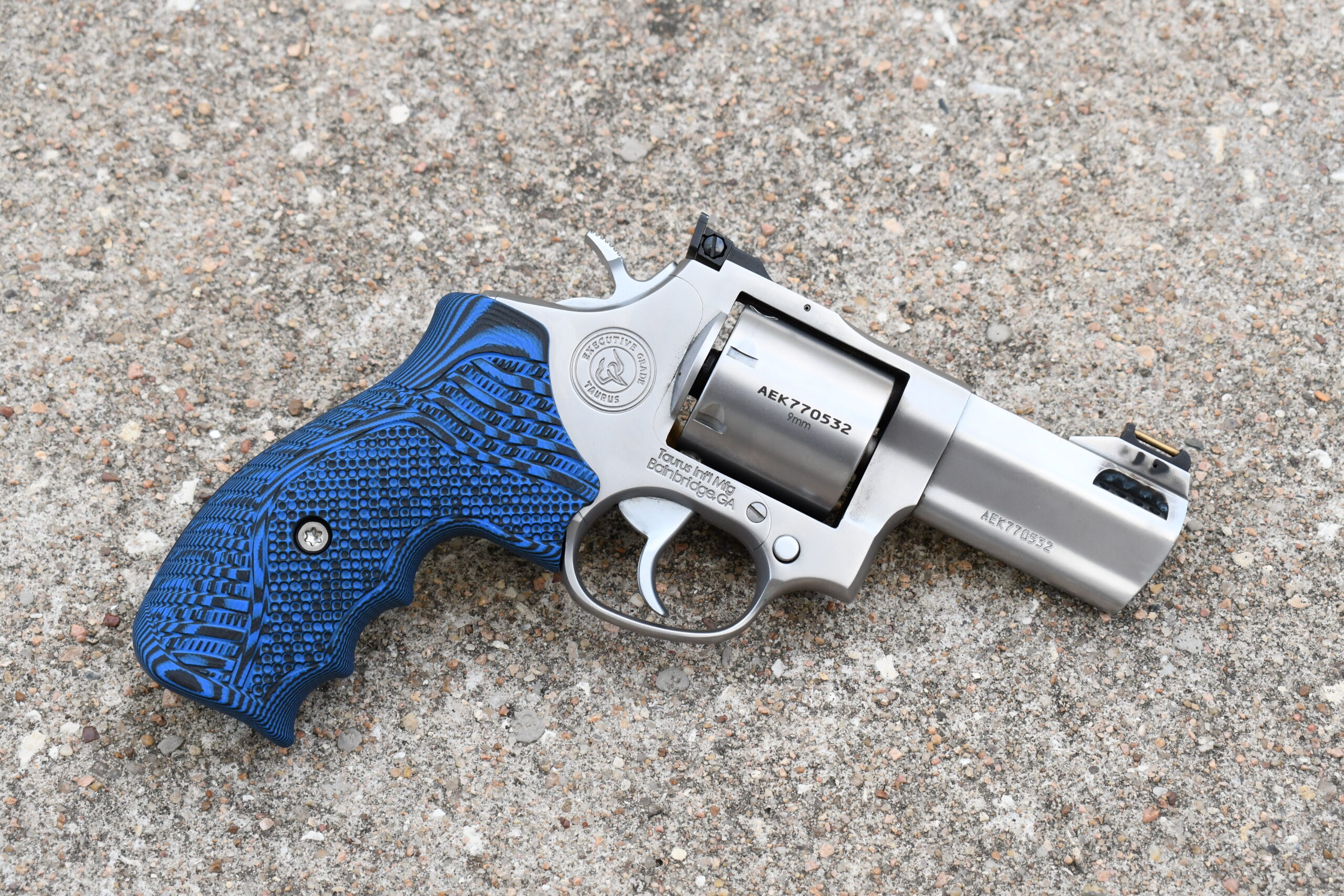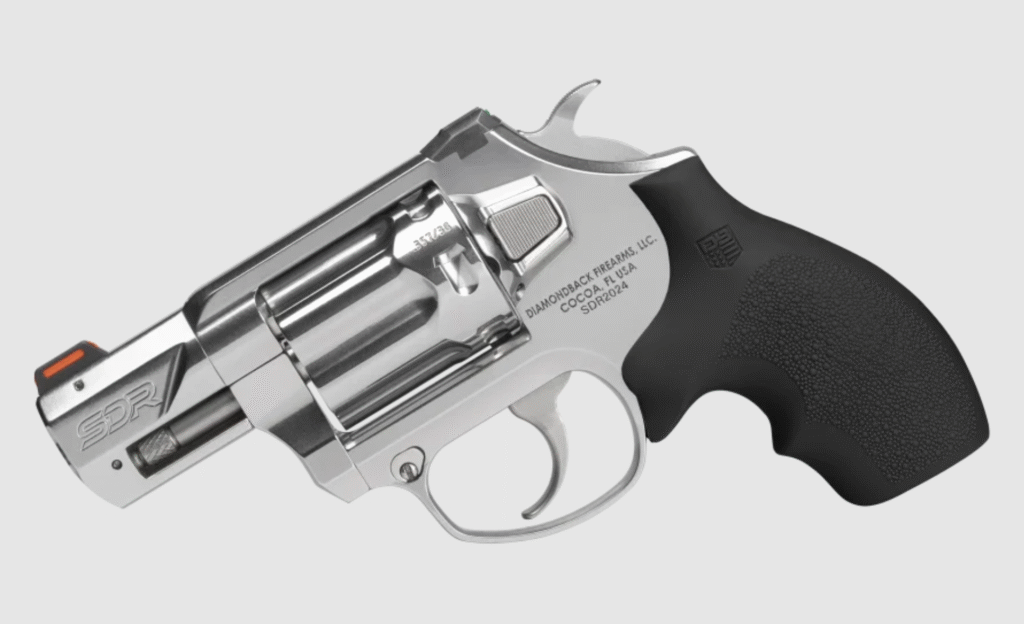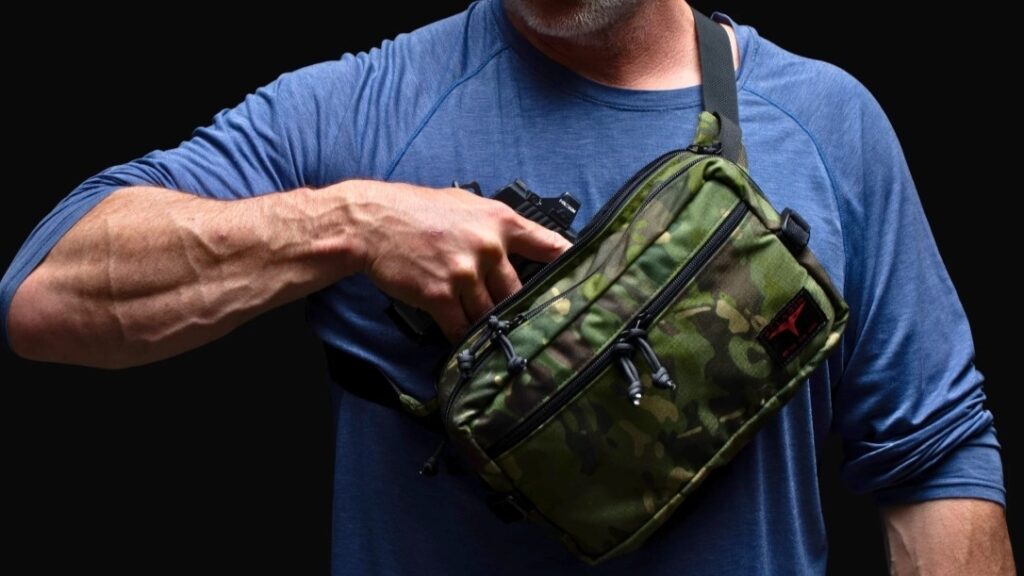Continued from Part 3
Wearing-In the Taurus 692 Executive Grade
Dear reader, I took a little break between Part 3 of my Taurus 692 Executive Grade revolver review and this installment. Prior to shooting any 9mm ammo, the Taurus 692 Executive Grade has crossed the 300-round threshold. Since the end of Part 3’s evaluation, I fired another 50 rounds of mixed Fiocchi 125 and 158 grain .357 Magnum at a local indoor range to get more reps in.
Other than the Hornady .38 Special +P loads featured in the last installment, the Taurus 692 Executive Grade has seen at least 280 rounds of .357 Magnum ammo. Up to this point, I can feel a difference in the smoothness of the gun when actuating its double-action trigger. It’s very subtle, but the way the cylinder turns feels slicker, as does the double-action trigger pull.
Advertisement — Continue Reading Below
Forgive me for making a very subjective comparison. However, I can best describe the feel of the fully broken-in Taurus 692 Executive Grade to the warmth and comfort of wearing a sweater and walking outside to feel the cool, crisp Autumn air for the first time after a long, humid, and hot, sweltering summer.
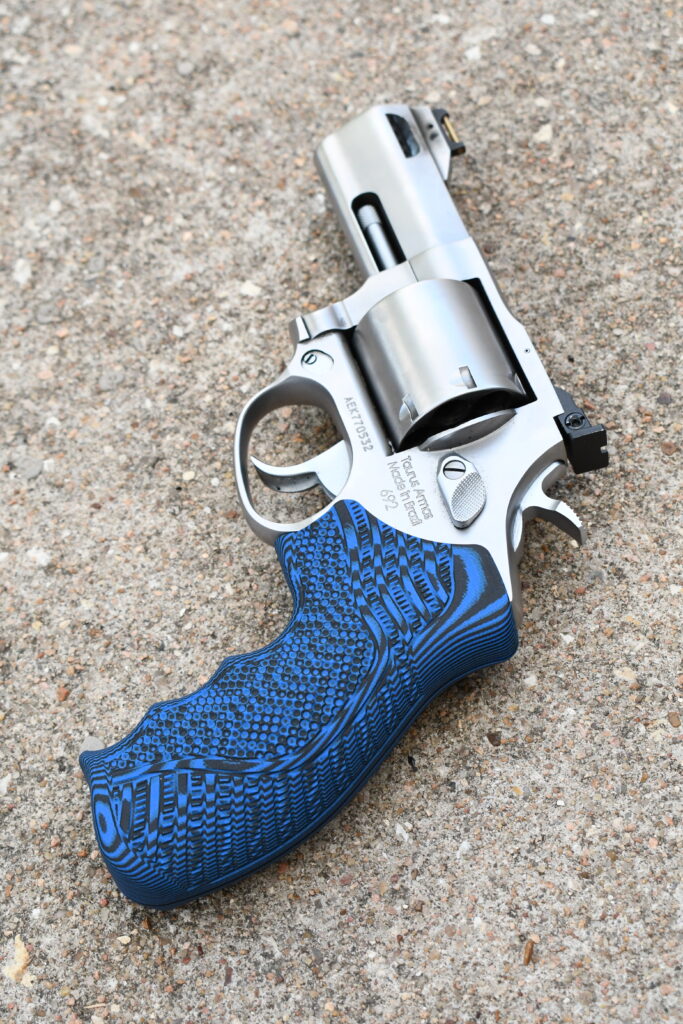
Enter LOK Grips Veloce Stocks
I’ve made no changes to this revolver other than swapping out the original factory stocks for more ergonomic LOK Grips Veloce palm swell stocks that fit Taurus revolvers. Waiting for these grips to be made to order and shipped was part of the reason I paused the review. Now that they’re here and installed on the revolver, it’s time to get back to work!
Advertisement — Continue Reading Below
This set of LOK Grips for the Taurus 692 (also fitting other Tracker models, Judges, and Hunters) not only fills in the frame’s sinus but also extends the length of the frontstrap and provides additional real estate for the fingers of the firing hand. LOK’s Veloce style texturing also increases the hand’s purchase over the grip.
This aftermarket pair of stocks will remain on the Taurus 692 Executive Grade for the remainder of the review since they’re more practical for shooting.
Shooting 9mm Luger With The Taurus 692 Executive Grade
With newly installed stocks and a freshly broken-in revolver, I returned to the 15-yard firing line with the 9mm Luger cylinder on the gun. I wasn’t expecting the action to feel as smooth with the 9mm cylinder because it had never turned inside the frame before. However, I was pleasantly surprised to see this wasn’t the case.
Advertisement — Continue Reading Below
Since the 9mm Luger cartridge is rimless, shooting with this cylinder requires the use of a moon clip. Five are included in the Nanuk case the 692 Executive Grade ships with.
Moon clips hold rimless semi-auto cartridges in the exact position so that the frame-mounted firing pin can reach their primers. They also prevent the casings from sliding and getting stuck into the charge holes. The other benefit is that upon ejection, a moon clip holding spent cases ejects quickly as a single unit.
To evaluate accuracy and muzzle velocities, I repeated the exact same protocol that I used with .357 Magnum and the .38 Special +P load in Part 3. Thumb-cocking the hammer, I fired two 10-round groups from rest using a bag at a target 15 yards away. Each load was measured with my Garmin chronograph, and I used the same 6 o’clock hold while shooting.
Advertisement — Continue Reading Below
It’s worth mentioning that the single-action-only trigger pull also felt smoother than the previous session referenced in Part 3.
In this instance, my chosen 9mm Luger factory loads consisted of the 147-grain flat-point Federal American Eagle AE9FP, the 115-grain Fiocchi Defense Dynamics JHP, the Hornady 124-grain Critical Duty JHP and the amazingly consistent Staccato Range 124-grain FMJ. I fully admit fault for most of the vertical stringing in the groups, as there’s a bit of a gist to shooting a revolver off a bag—even single action.
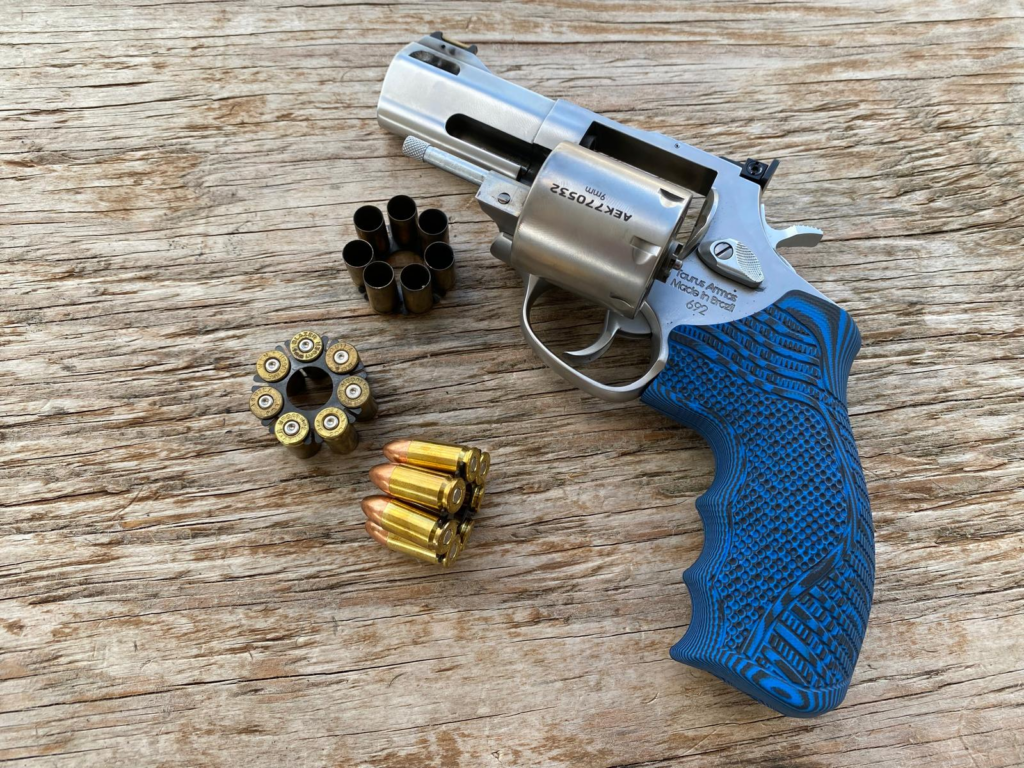
Advertisement — Continue Reading Below
Federal American Eagle AE9FP 147-Grain Flat Point
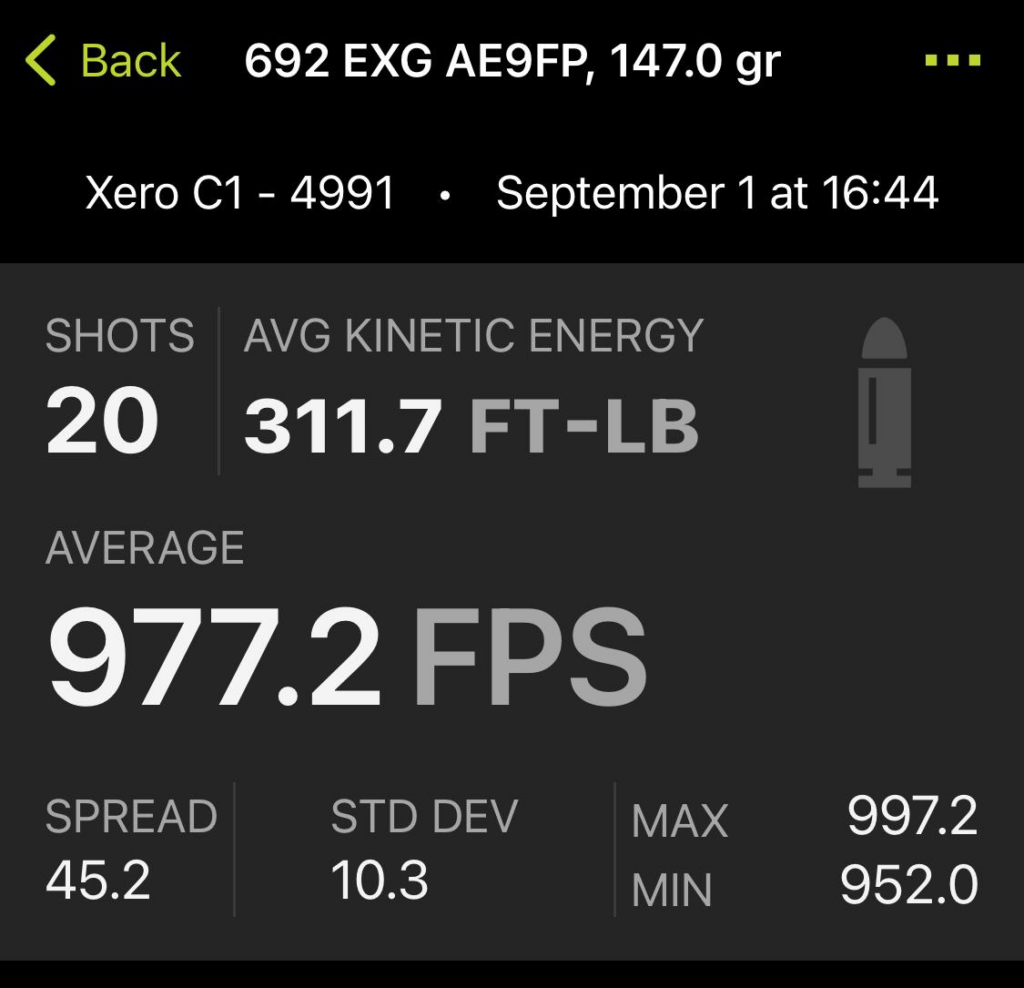
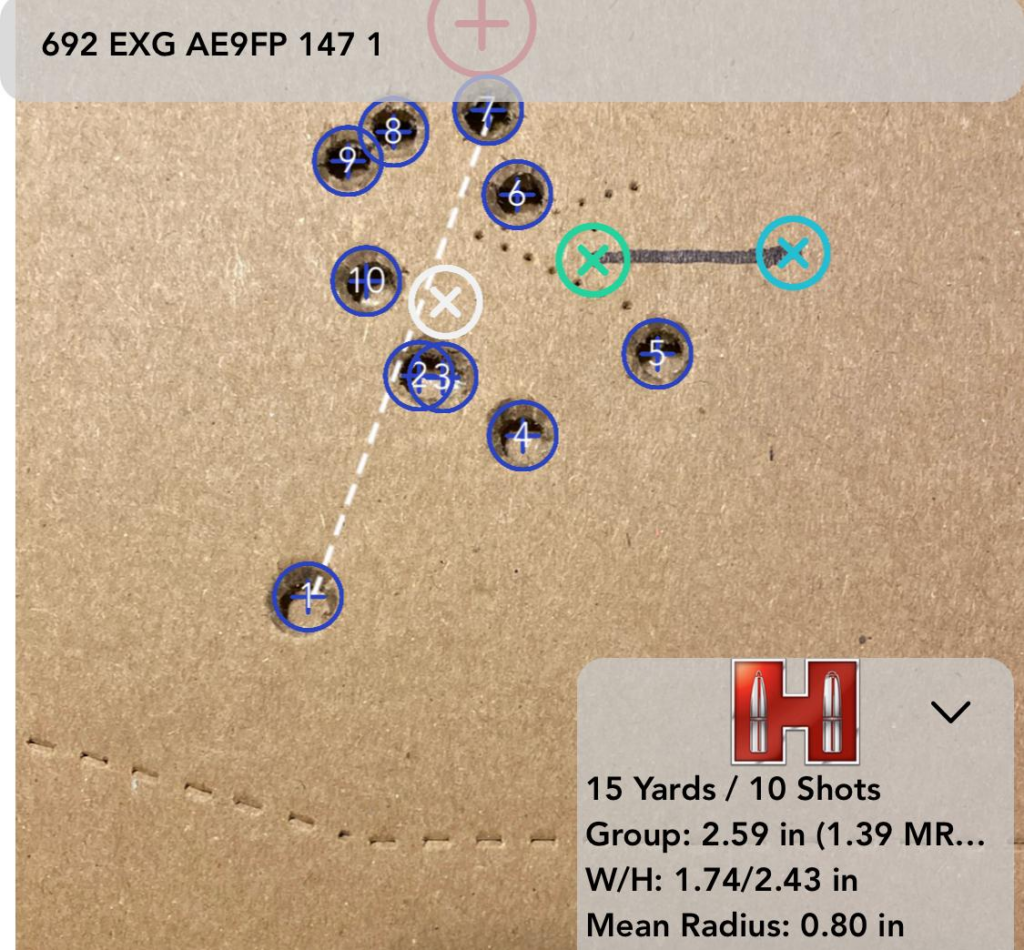

Advertisement — Continue Reading Below
Fiocchi 115-Grain Defense Dynamics JHP
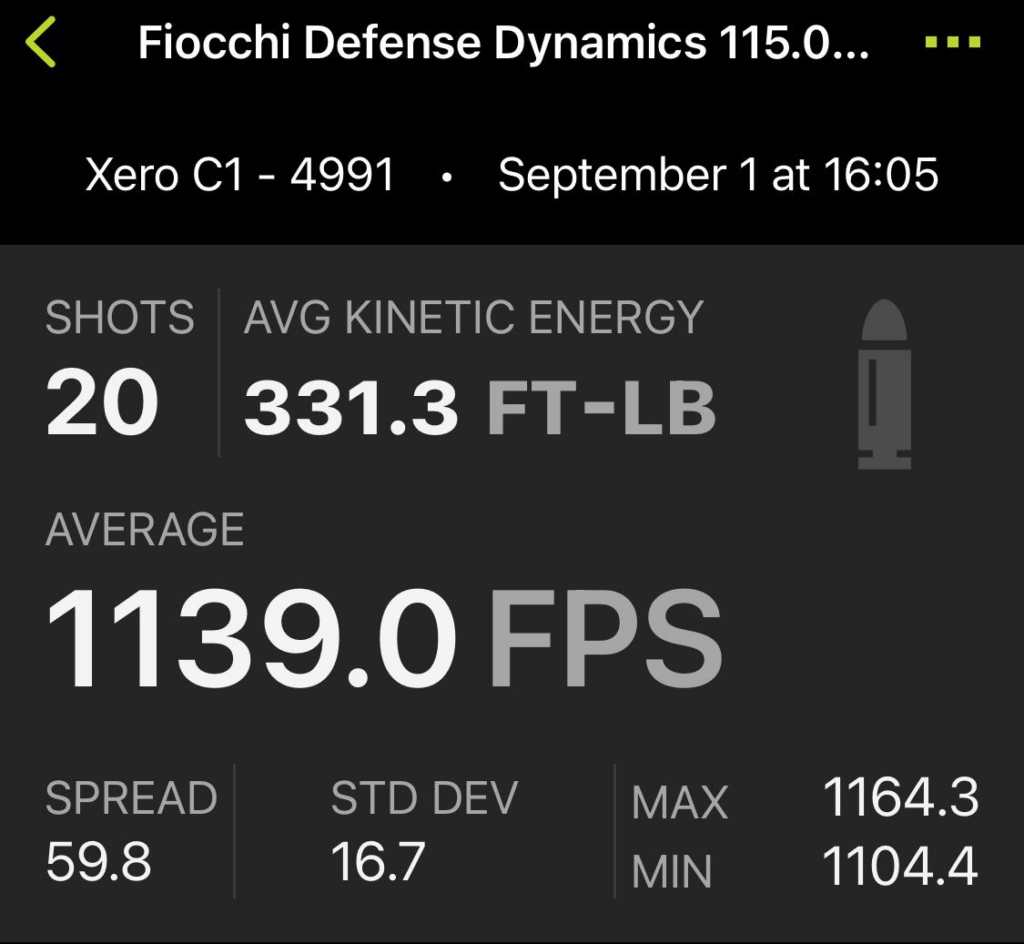
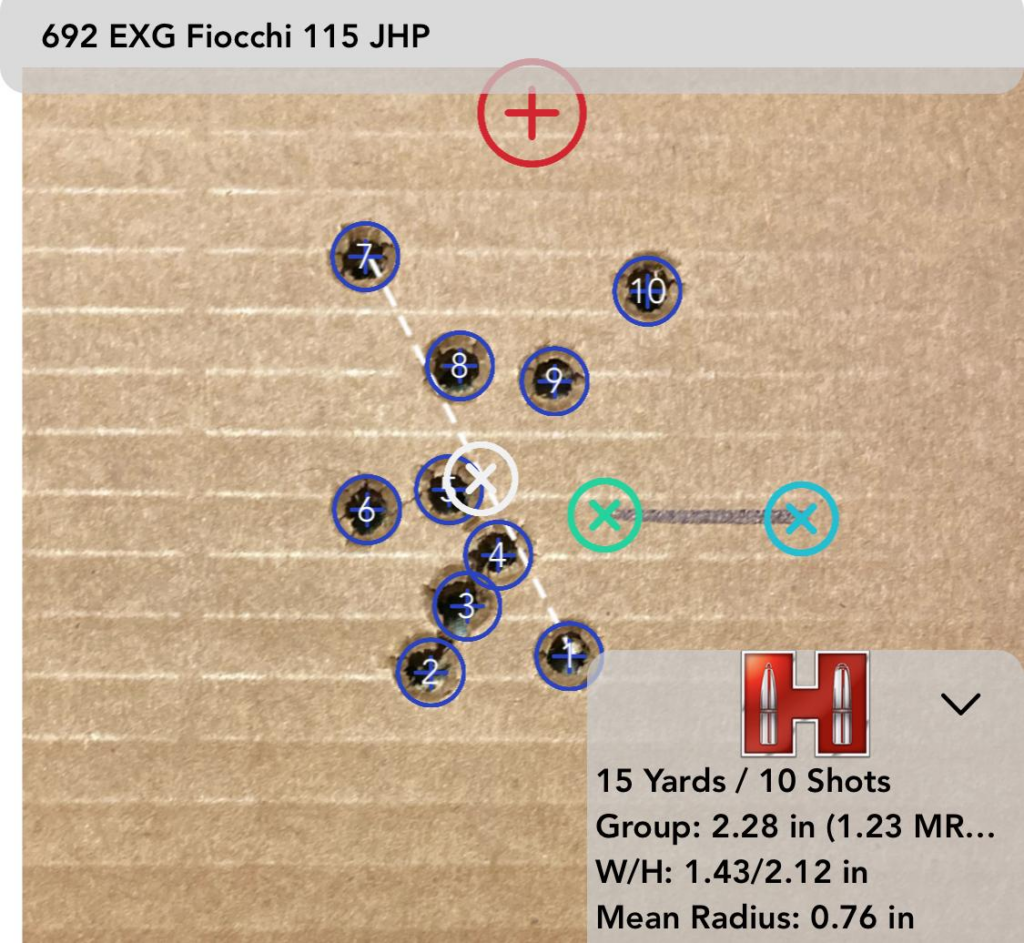
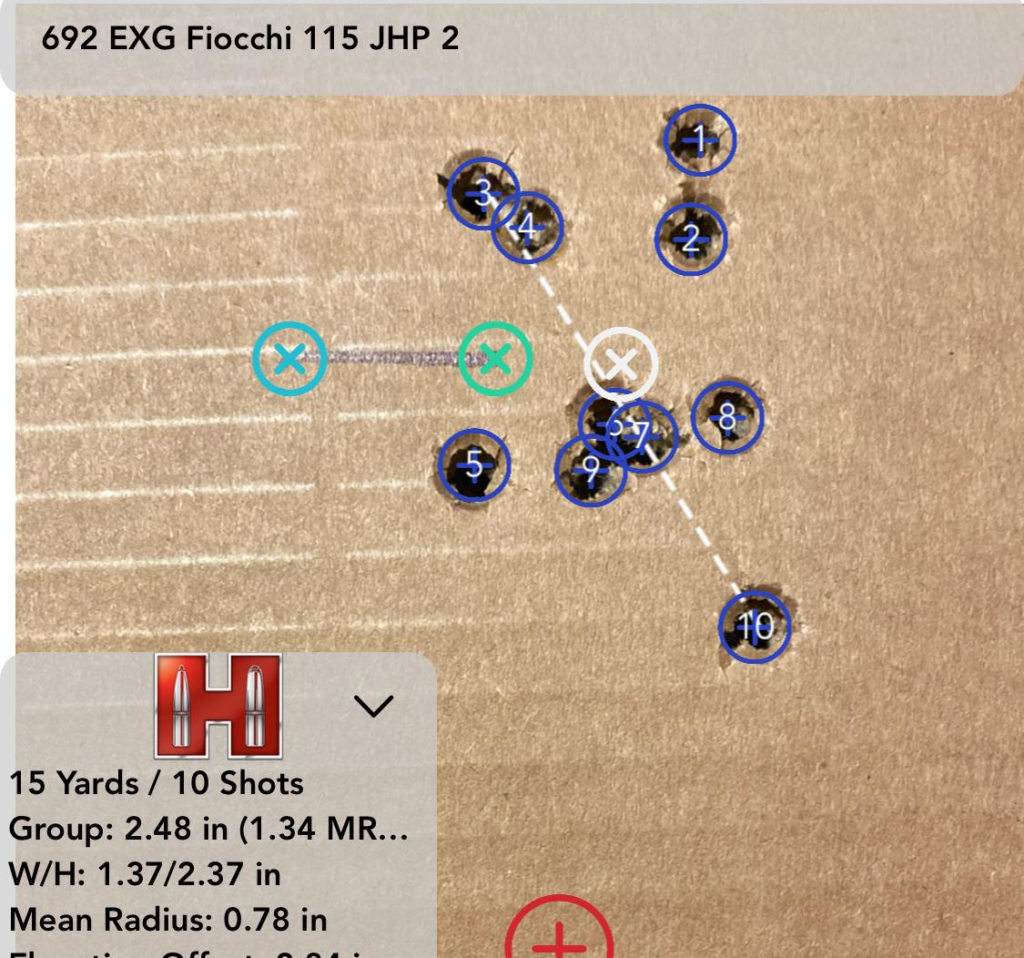
Advertisement — Continue Reading Below
Staccato Range 124-Grain Range FMJ

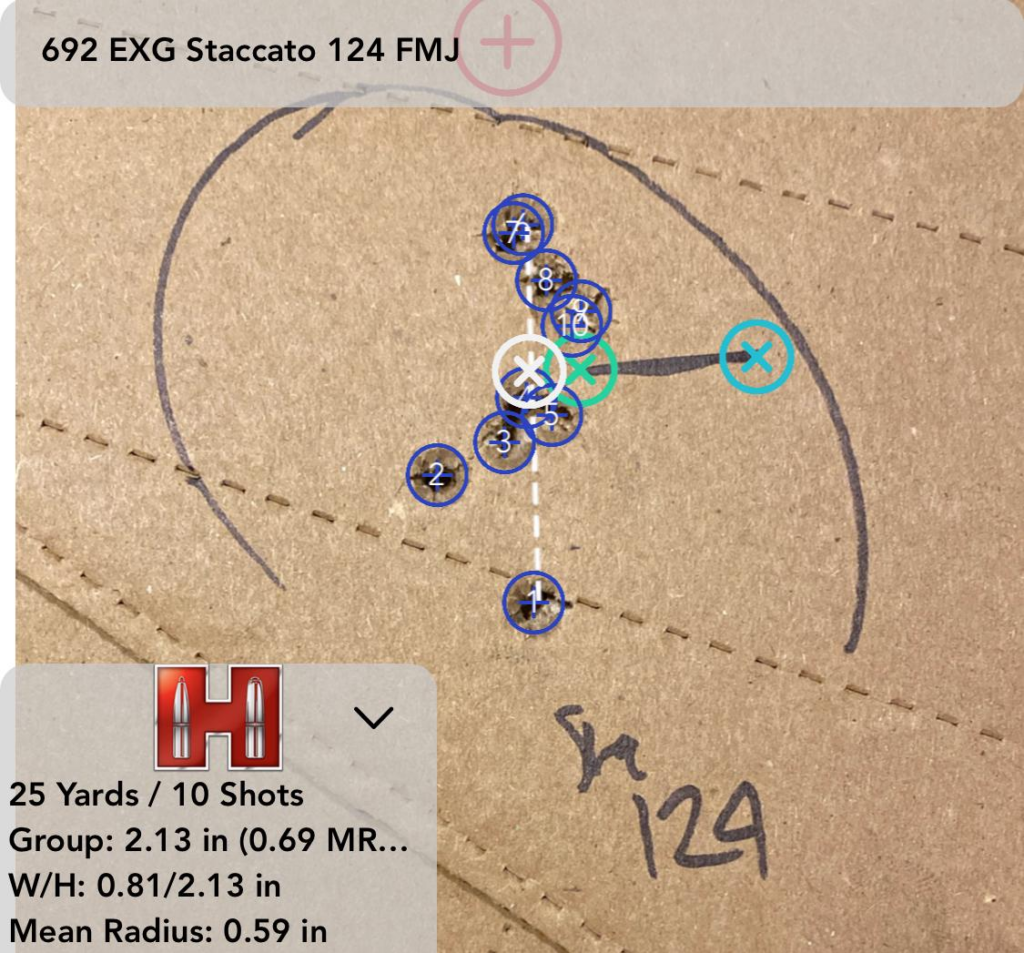
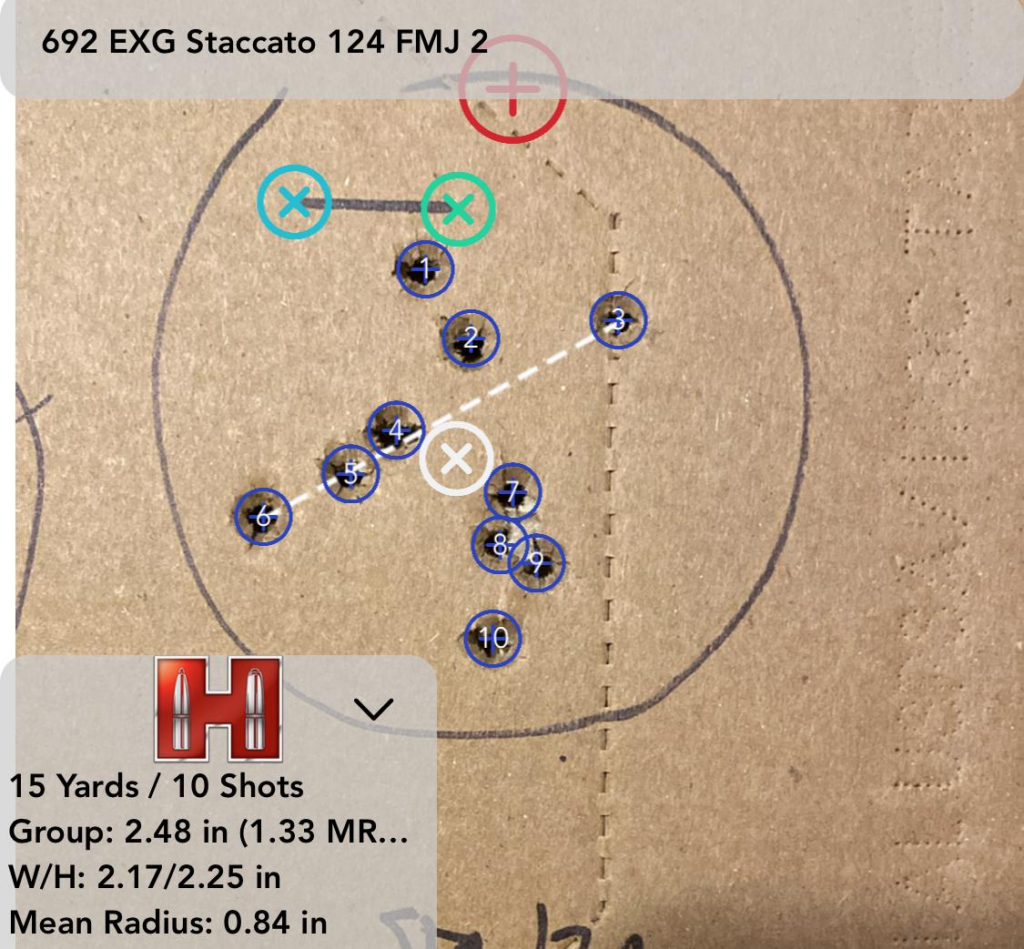
Advertisement — Continue Reading Below
Hornady 124-Grain Critical Duty JHP +P
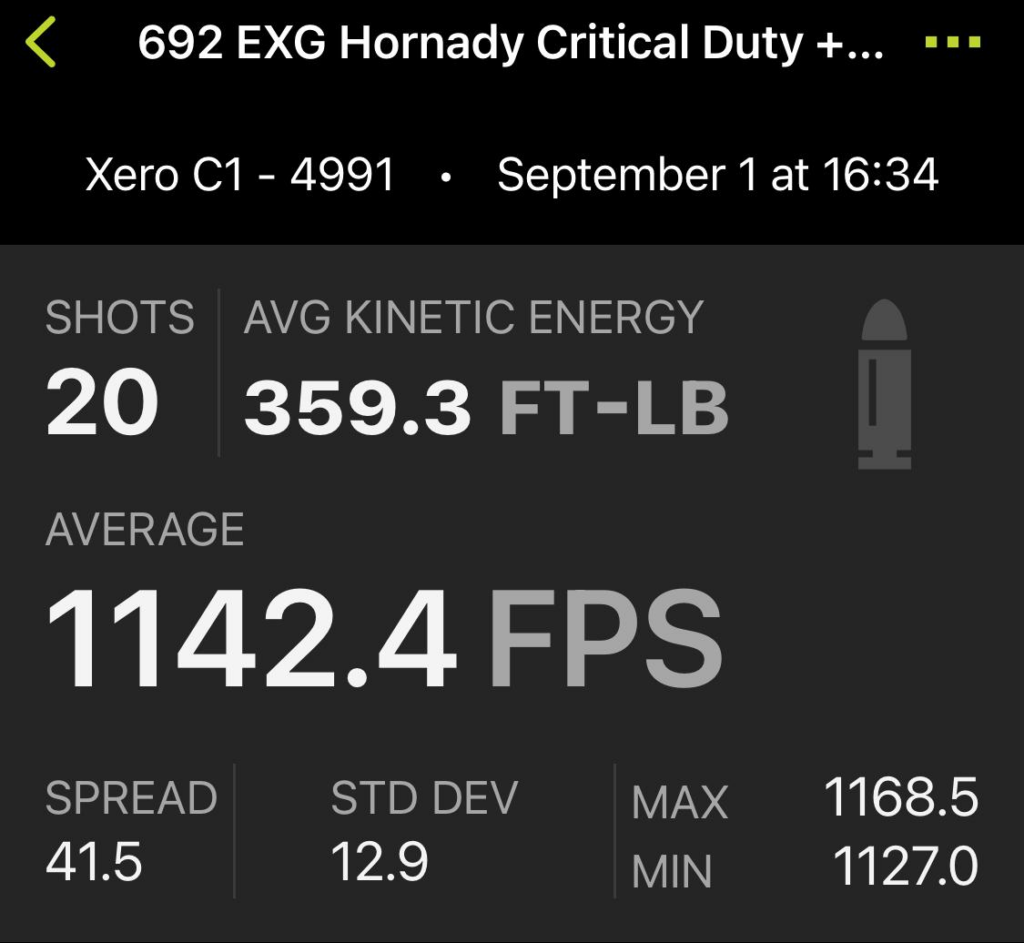

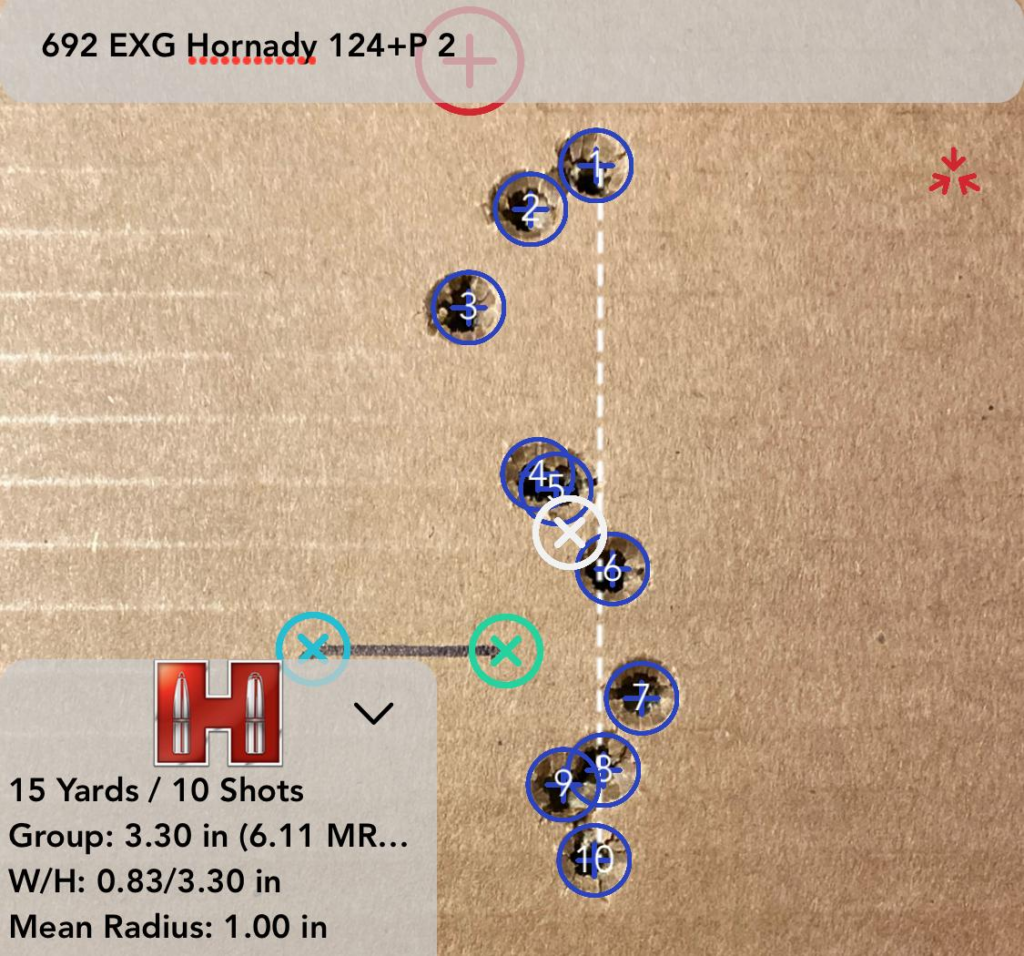
Bonus Cartridge: Blazer Aluminum 115
After shooting groups with all of the different factory 9mm Luger cartridges referenced above, I decided to shoot a quick 20 rounds of factory 115-grain Blazer Aluminum offhand. I wanted to know how the 692 Executive Grade behaved with case materials other than brass.
All 20 rounds fired without issue, but ejecting the spent moon clip full of empty cases was not as smooth as it was with empty brass cases. In this instance, I had to firmly grasp the revolver and swiftly smack the ejector-rod with some authority.
Due to the heft of the Taurus 692 Executive Grade and the fact that it has a ported barrel, 9mm Luger “bullet jump” isn’t an issue.
A 9mm Revolver?
Because felt-recoil is subjective, it can be hard to describe it. In this instance, shooting factory 9mm Luger cartridges through the Taurus 692 Executive Grade feels like shooting mild to moderate .357 Magnum factory loads. 9mm rounds certainly won’t feel like the old-school full-house screaming hot .357 Magnum loads, either.
Honestly, the only actual downside to shooting 9mm Luger ammo through this revolver is how cumbersome it is to insert live or spent cartridges into the moon clips without the special moon-clip tool.
I understand that 9mm Luger bullets are slightly smaller in diameter (0.355”) than most .38 Special / .357 Magnum bullets (0.357”). So, I wasn’t sure what to expect with regard to accuracy and constancy from using slightly undersized bullets. However, the results more than exceeded my expectations.
Even though the distance was only 15 yards, I think the groups are satisfactory and not all dissimilar from the .357 Magnum groups from the previous part. Just like with the varying .357 Magnum factory loads I shot, the different 9mm Luger cartridges also varied in their points of impact.
Fortunately, the Taurus 692 Executive Grade revolver has that adjustable rear sight, which removes any concerns. In fact, I’d argue it’s practically mandatory on a “hybrid” revolver like this one. I think the same goes for the 1:10 rifling twist in its barrel. That rate seems to land on a happy medium that can stabilize a realistic cross-section of .35-caliber bullets between 110 to 160 grains.
Parting Shots
Even though the total 9mm Luger round-count through the end of this installment is only 114 rounds, I think shooting and grouping this popular semi-automatic pistol cartridge warrants further exploration. Perhaps it deserves a separate editorial piece beyond a general review of this Taurus revolver.
I’d like to establish whether this .357 Magnum revolver merely happens to handle 9mm Luger as an extra-value add or whether it stands on its own as a purpose-built 9mm Luger on its own, too.
